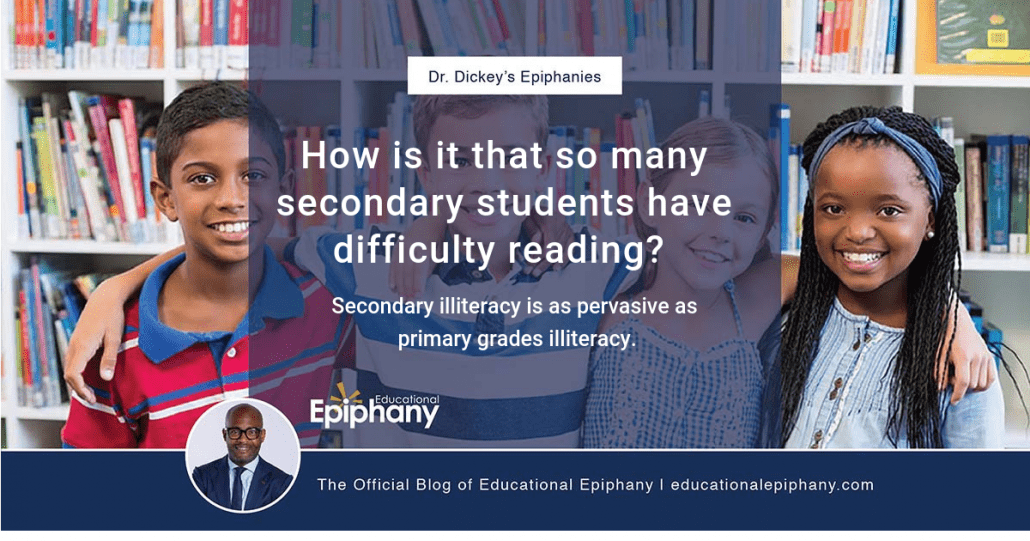To confirm my suspicions and help districts to formulate authentic, K-12 literacy development action plans, I have made it a point to sit down with elementary, middle school, and high school children across the country for the purpose of having them read to me while I record their individual miscues for analysis. Literacy experts refer to what I have described as “running records,” which should be a key component of the standard of service for students having difficulty with reading every 6 to 8 weeks.
One student in particular, stood out for me this week…a high school upperclassman…15-years-old who said a few words to me that I will never forget, “Dr. Dickey, I have never liked to read because I am not good at it, but I will read for you if it will help you to help other kids.” He continued by making another compelling statement, “Dr. Dickey, I don’t read well because I see the letters on the page, but I don’t know how to say them.”
What was the child trying to tell me?
He was trying to tell me that he has difficulty decoding. He was trying to tell me that he is unfamiliar with the relationship between the 26 letters in the alphabet, the 44 correlate phonemes (sounds that the 26 letters make), and the 144 graphemes (total number of ways to write/spell the phonemes). This high school upperclassman was trying to tell me that he never attained phonemic awareness, nor did he master phonics (the ability to correlate sounds with letters or groups of letters in the alphabetic writing system).
He was trying to tell me that he has tremendous difficulty comprehending what he reads because the vast majority of his “during-reading brain power” focuses on decoding.
He was trying to tell me that very little if any of his “during-reading brain power” focuses on creating meaning (understanding what he has read) and ascending the pyramid of cognitive demand (i.e., analyzing, applying, synthesizing, evaluating).
He was trying to tell me that the imbalance of his “during-reading brain power” results in constant, never-ending frustration about reading; which impacts his academic confidence. In fact, he stopped reading several times throughout the read-aloud to tell me, “Dr. Dickey… I told you, I am a terrible reader.”
So what did I discover during his read-aloud? The teenager has reading skills consistent with those of a fourth grader. He was right. He cannot sound out words in a manner consistent with his physical development. He cannot blend vowels and consonants. He inserts words in the text that simply aren’t there. He omits words that are in the text which severely interferes with creating meaning. He substitutes unfamiliar words in the text for words that do not make sense in the passage. He reads without intonation and regard for punctuation, which is a red flag for rolling comprehension.
America. We have to better than this by children. His knowledge and ability gaps are not uncommon. We know that the vast majority of children read multiple grade levels below developmental expectations (with poor and minority children at the bottom of every measure of achievement). How long are we going to admire this problem? We have to solve it.
Here is the educational epiphany.
- Provide teachers and everyone on our students’ instructional bench with ongoing training on delivering and supporting K-12 instruction characterized by attention to phonemic awareness, phonics, vocabulary development, fluency, and comprehension strategies;
- Know every students’ data and develop an informed plan of action to fill any and all gaps. No child should be permitted to languish in illiteracy; and
- Ensure that every member of our students’ ecosystem exercises “instructional due care” by never allowing children to be underserved – not even for a moment.
Donyall D. Dickey, Ed.D.

